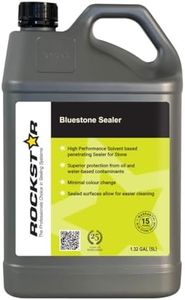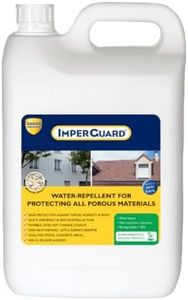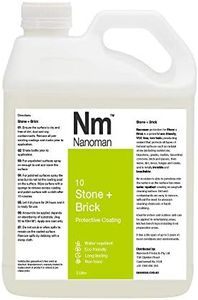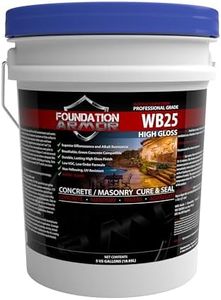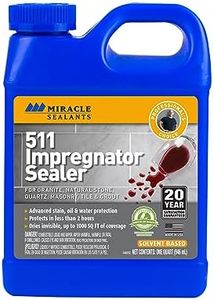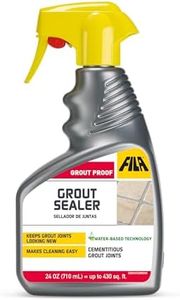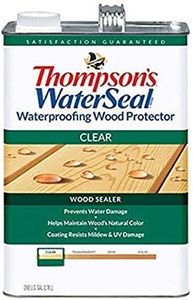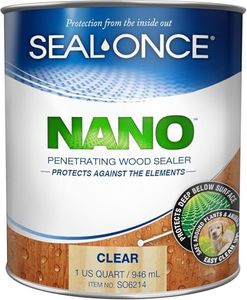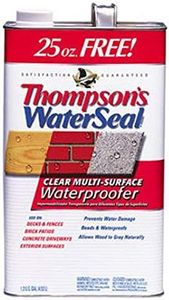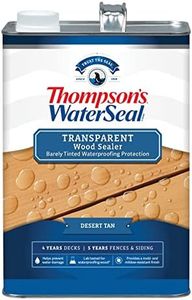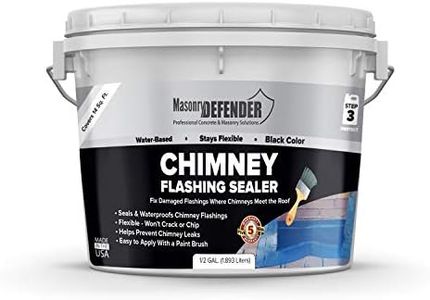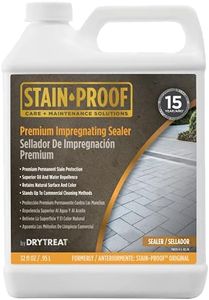We Use CookiesWe use cookies to enhance the security, performance,
functionality and for analytical and promotional activities. By continuing to browse this site you
are agreeing to our privacy policy
10 Best Patio Sealer
From leading brands and best sellers available on the web.By clicking on a link to a third party's website, log data is shared with that third party.
Buying Guide for the Best Patio Sealer
Choosing the right patio sealer is essential to protect and enhance the appearance of your outdoor surfaces. Sealers not only shield your patio from the effects of weather, stains, and wear but also help in preserving the material's color and texture. The best way to choose a patio sealer is to consider the specific needs of your patio's material and desired look. Understanding the key properties of sealers ensures you make an informed decision for long-lasting results.Type of SealerThere are several types of patio sealers, such as penetrating sealers, film-forming (surface) sealers, and enhancing sealers. This spec refers to how the product interacts with your patio surface. Penetrating sealers soak into the pores, providing invisible protection without changing the appearance, making them ideal for those who want a natural look. Film-forming sealers create a protective layer that may give a shiny or wet look, enhancing colors but potentially making surfaces slippery. Enhancing sealers bring out the color and depth while offering protection. Your choice should depend on whether you prefer an invisible finish, a glossy look, or added color, and on the material of your patio (concrete, stone, pavers, etc.).
Finish (Gloss Level)This spec describes the final look the sealer gives to your patio—ranging from matte (no shine) through satin (soft sheen) to high gloss (shiny). High-gloss finishes make colors pop but may look unnatural and can sometimes be slippery when wet. Satin provides a subtle sheen without drawing too much attention, while matte maintains the patio's original appearance. Consider how you want your patio to look and how much maintenance you want to do, as glossier finishes may require more frequent reapplication and cleaning.
Durability/LongevityThis determines how long the sealer will last before it needs to be reapplied. Some sealers are designed to last just a year or two, while others can protect for many years. Durability is affected by weather exposure, foot traffic, and the type of material being sealed. If your patio is heavily used or exposed to harsh elements, opt for a sealer with longer-lasting durability. But if you like to refresh your patio's appearance yearly, a shorter-lasting sealer can also be suitable.
UV ProtectionUV protection prevents sun damage, such as fading or discoloration. Not all sealers offer this feature. If your patio receives a lot of direct sunlight, UV protection is very important to maintain its original color and strength. Look for sealers specifically mentioning UV resistance if sun exposure is a concern for your space.
Slip ResistanceEspecially for film-forming sealers, the resulting surface can sometimes be slippery when wet. Slip resistance is an important spec if your patio is likely to get wet or is used by children or elderly individuals. Some sealers are formulated to add grip, or special additives can be mixed in. Evaluate your household needs and choose higher slip resistance if safety is a priority.
BreathabilityBreathability refers to how well the sealer allows moisture to escape from the patio material. If moisture is trapped, it can lead to damage, especially in freeze-thaw climates. Penetrating sealers usually offer better breathability, while some film-forming options can trap moisture, leading to issues over time. For patios in damp or variable climates, breathability is a valuable spec to consider.
Ease of ApplicationThis describes how easy it is to apply the sealer—whether it requires professional tools, a single coat, drying time, or special preparation. Some products are simple to apply with a roller or sprayer, while others need specific conditions or multiple coats. If you plan to do the job yourself, go for a user-friendly application process; otherwise, you may need professional help.
